
table of contents
- Cats: 20 poisonous houseplants from A to D.
- E to K
- L to Z
- frequently asked Questions
Poisonous houseplants are not uncommon for cat owners. Numerous plants have a toxic effect on the velvet paws. 20 are presented to you in this article.
In a nutshell
- various parts of the plant are poisonous
- are nibbled on
- numerous symptoms of poisoning are possible
Cats: 20 poisonous houseplants from A to D.
Cyclamen (Cyclamen persicum)

- Toxic: highly toxic in all parts of the plant
- Synonyms: Room cyclamen, Persian cyclamen
- Distribution: Southeast Europe and North Africa to the Middle East
- Growth: upright, clump-forming, with a hypocotyl bulb, perennial, sensitive to frost
- Height: 10 to 30 cm
- Flowering period: September to mid-April
- Flower: solitary, pendulous, white, pink or purple
- Location: bright, no direct sun, 15 ° C to 18 ° C
Avocado (Persea americana)
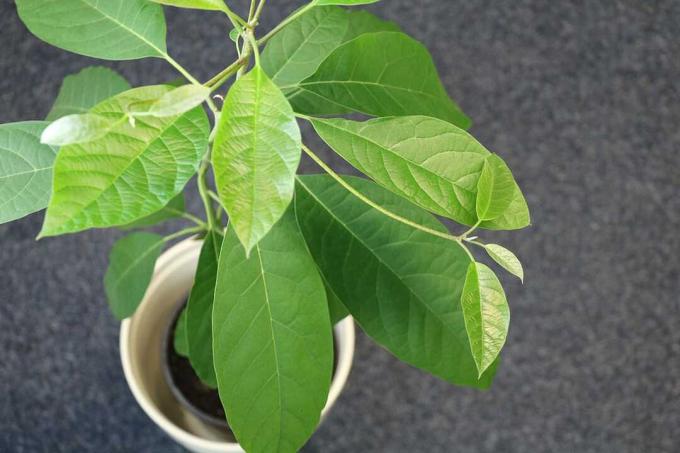
- Toxic: fruit and stone (for cats), can be consumed by humans
- Synonyms: avocado pear, butterfruit, alligator pear
- Distribution: Mexico, Central America
- Growth: upright, multi-stemmed, perennial, spreading crown, not hardy
- Height: 500 to 2,000 cm
- Flowering period: April to mid-May
- Blossom: inconspicuous, small, yellow-green, panicle blossoms, only after 10 years
- Fruit: edible
- Location: sunny, tolerates shady to partially shaded places, warm all year round, ideal winter garden plant
Tree friend (Philodendron)
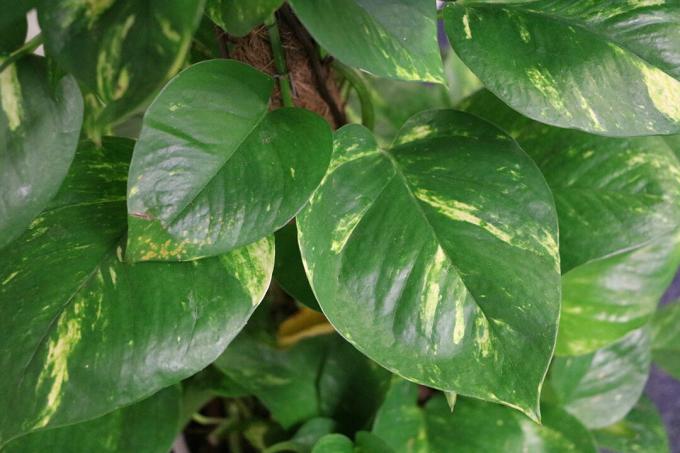
- Toxic: in all parts of the plant, sap irritates the skin
- Distribution: Florida across Central America to South America, including the Caribbean
- Growth: strongly dependent on species, evergreen, use trees for climbing, not hardy
- Growth height: up to 600 cm
- Flowering time: possible all year round
- Flower: piston flower, white, extremely rare as a houseplant
- Location: light to partially shaded, no direct sun, 18 ° C to 25 ° C, protected from drafts
Note: For plants with poisonous plant or milk sap, you should always wear gloves when caring for them. Cats can also get the juice, for example into their fur.
Weeping fig (Ficus benjamina)
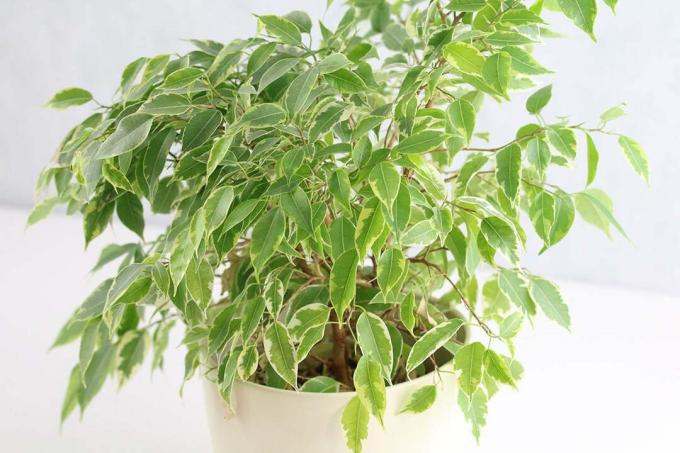
- Toxic: in all parts of the plant, plant sap leads to allergic reactions or contact dermatitis
- Distribution: Himalaya to southern China, Malaysia and Australia, Solomon Islands
- Growth: upright, as a tree or shrub, spreading crown, evergreen, not hardy
- Height: 30 to 800 cm
- Flowering time: possible all year round
- Blossom: extremely rare in Central Europe, inconspicuous, spherical, green
- Location: sunny to partially shaded, protected from midday sun, 20 ° C to 28 ° C in summer, min. 18 ° C in winter
Note: The popular rubber tree (Ficus elastica) is also not recommended for cat owners because it is poisonous house plants. Cats like to eat the fleshy leaves.
Bow hemp (Sansevieria trifasciata)

- Poisonous: in all parts of the plant
- Synonym: mother-in-law's tongue
- Distribution: Central Africa
- Habit: succulent, stemless, forms rhizomes, sharp-edged leaves, perennial, sensitive to frost
- Height: 15 to 160 cm
- Flowering period: mid-May to mid-June
- Flower: spikes, up to 80 cm long, green
- Location: light to partially shaded, protect from direct midday sun,
Calla (Zantedeschia aethiopica)
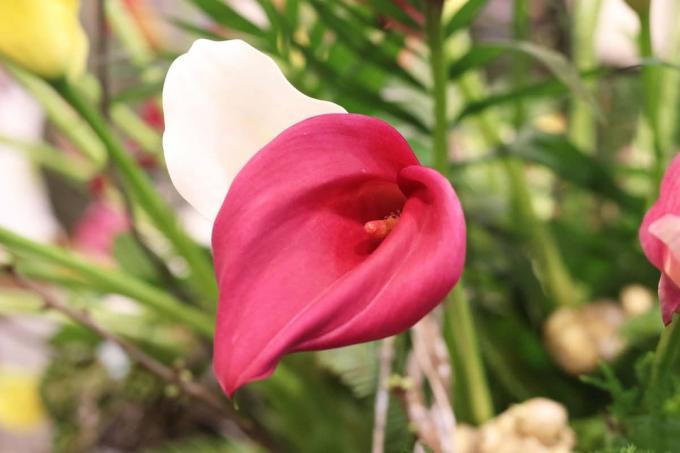
- Toxic: in all parts of the plant due to milky sap
- Synonyms: Zimmercalla
- Distribution: Africa
- Growth: upright, forms rhizomes, sensitive to frost
- Height: 30 to 90 cm
- Flowering period: February to mid-April
- Flower: solitary, piston-like flowers, white, large
- Location: sunny to partially shaded, protect from direct midday sun, 10 ° C to 20 ° C
Dragon trees (Dracaena)
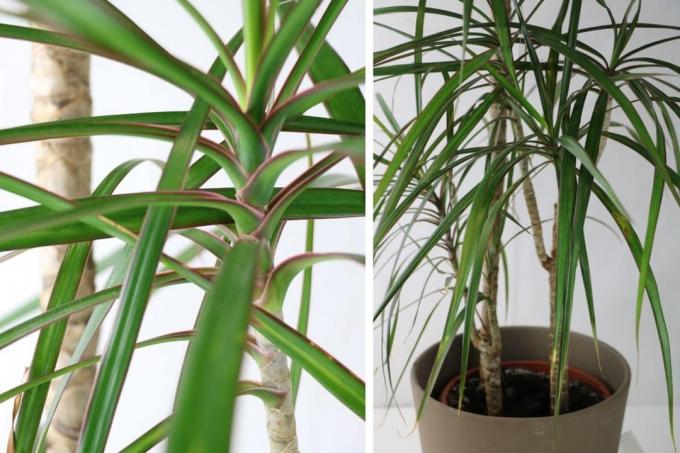
- Poisonous: in all parts of the plant
- Distribution: worldwide in tropics and subtropics
- Habit: tree-shaped, upright, broad crown, slightly overhanging, perennial, not winter hardy
- Growth height: up to 200 cm (in planters)
- Location: bright to shady, protect from direct midday sun, warm, humid, min. 15 ° C
Note: The lucky bamboo (Dracaena braunii) also belongs to the dragon trees and should therefore not come near your house tiger.
E to K
Real aloe (aloe vera)
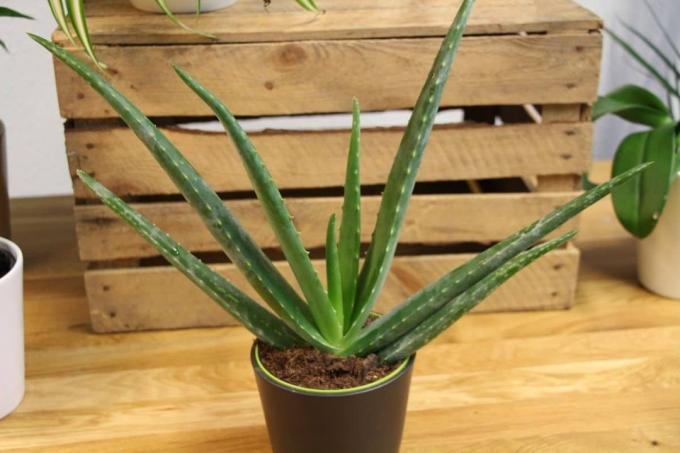
- Toxic: in all parts of the plant, except pure aloe vera gel
- Distribution: Arabian Peninsula
- Habit: Succulent, often stemless, serrated leaf margin, aloe vera gel that can be used inside, perennial, sensitive to frost
- Height: 40 to 50 cm
- Flowering period: January to the end of February
- Blossom: up to 90 cm long, grape blossoms, yellow
- Location: full sun, warm, ideal for winter gardens and window sills
Single leaf (Spathiphyllum wallisii)

- Toxic: in all parts of the plant due to oxalic acid
- Synonyms: peace lily, sheath leaf, leaf flag
- Distribution: Mexico to Colombia
- Growth: upright, clump-forming, slightly overhanging, perennial, not winter hardy
- Height: 40 to 80 cm
- Flowering period: mid-June to September
- Flower: large, piston flower, single, white and yellow
- Location: semi-shady to shady, warm, humid, 16 ° C to 25 ° C
- Special features: counts as an air purifier
Efeutute (Epipremnum aureum)

- Toxic: in all parts of the plant, skin contact can cause irritation
- Synonym: Golden Efeutute
- Distribution: Moorea (South Pacific island), overgrown in tropical Asia and Oceania
- Habit: climbing plant, forms aerial roots, evergreen, not hardy
- Height: up to 2,000 cm
- Flowering time: possible all year round
- Blossom: Piston flowers, up to 24 cm long, bloom extremely rarely
- Location: shady to partially shaded, min. 16 ° C, ideal for winter gardens
Elephant foot (Beaucarnea recurvata)
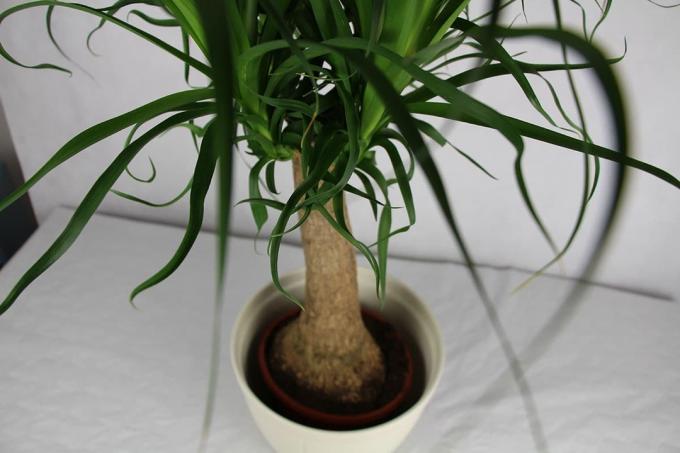
- Poisonous: in all parts of the plant
- Synonym: Monja
- Used in: Veracruz (state in Mexico)
- Habit: Succulent with tree shape, weakly branched, leaves up to 200 cm long, evergreen, not hardy
- Growth height: up to 900 cm
- Location: bright, protect from direct midday sun, permanently warm, protect from drafts
Window leaves (Monstera)

- Toxic: in all parts of the plant due to sap, fruits non-toxic
- Distribution: Central America, South America, the Caribbean
- Habit: climbing plant, creeping, evergreen, not hardy, forms very large leaves
- Growth height: up to 300 cm
- Location: bright, protect from direct midday sun, warm, sufficiently humid
Flamingo flowers (Anthurium)

- Poisonous: in all parts of the plant, highest amount of poison in leaves
- Distribution: Central America, South America, the Caribbean
- Habit: epiphytes, more rarely terrestrial, upright, evergreen, not hardy
- Height: 30 to 120 cm
- Flowering time: possible all year round
- Blossom: large, solitary, piston-like flowers, pronounced spathe, yellow to red
- Location: shady to partially shaded, warm, protected from drafts, sufficiently humid
Flaming Käthchen (Kalanchoe blossfeldiana)
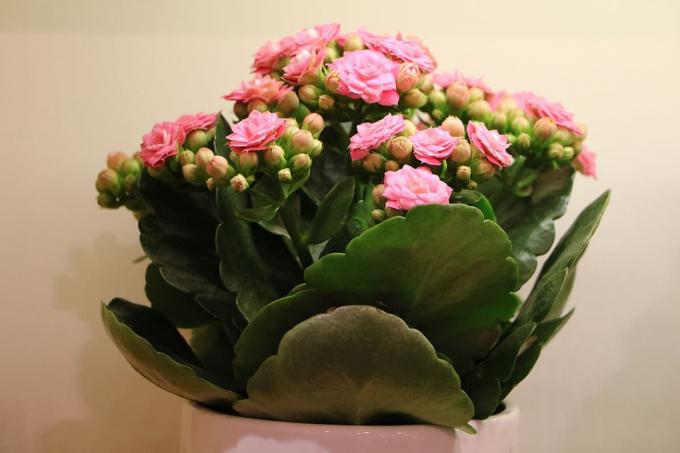
- Toxic: in all parts of the plant, not for humans
- Distribution: Madagascar
- Habit: succulent, upright, dense, bushy, evergreen, not hardy
- Growth height: up to 30 cm
- Flowering period: February to mid-June
- Flowers: terminal, four-fold, many-flowered (up to 500 flowers per plant), intense red
- Location: bright, no direct midday sun, warm, min. 16 ° C
L to Z
Lilies (Lilium)

- Poisonous: in all parts of the plant, even pollen, especially onions
- Distribution: entire northern hemisphere
- Habit: bulbous plant, upright, slightly overhanging depending on the species, winter hardiness also dependent on the species
- Height: 20 to 300 cm
- Flowering time: depending on the species, mostly from mid-May to mid-August
- Blossom: solitary or in clusters, long pedicels, numerous colors, radial symmetry, 6 stamens
- Location: bright, avoid direct sunlight, not too warm
Note: Other bulb plants such as kitchen onions (Allium cepa), tulips (Tulip) or daffodils (Narcissus) are also poisonous house plants for cats. You should cultivate them in the apartment so that they cannot be reached by the velvet paws, or you should do without them.
Cycad (Cycas revoluta)
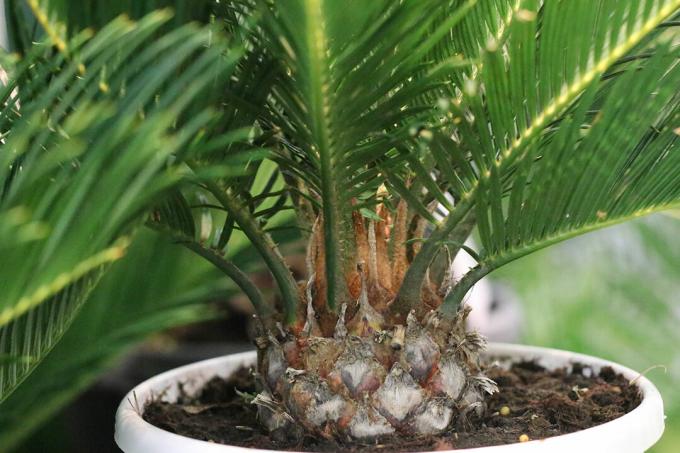
- Poisonous: in all parts of the plant
- Synonyms: Japanese Sago Palm Fern, Japanese Palm Fern
- Distribution: Japan, China
- Habit: upright, spreading, overhanging, pinnate palm fronds up to 200 cm long
- Height: 300 to 800 cm
- Location: bright, warm, protect from drafts, min. 15 ° C
Palm lilies (yucca)

- Toxic: in all parts of the plant, not for humans
- Distribution: Mexico, western USA
- Growth: upright, single or multi-stemmed, different leaf shapes, evergreen, not winter hardy
- Growth height: strongly depending on the species, usually 60 to 300 cm in indoor cultivation
- Location: full sun to full sun, warm,
Phalaenopsis orchids (Phalaenopsis)
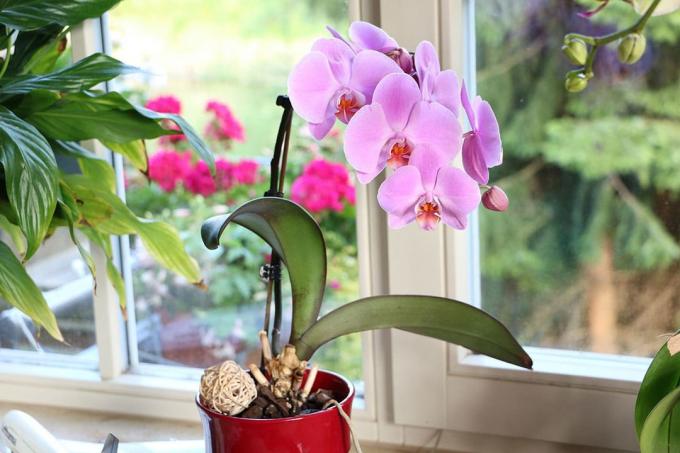
- Poisonous: in all parts of the plant
- Synonym: butterfly orchid
- Distribution: Philippines, Indonesia, rest of Southeast Asia to Queensland
- Growth: upright, without side shoots, epiphytic, perennial, not winter hardy
- Growth height: up to 40 cm
- Flowering period: October to February
- Blossom: single, long stem up to 100 cm, in numerous colors and patterns, threefold, zygomorphic
- Location: shady to partially shaded, warm throughout, sufficiently humid, avoid dry heated air, protect from drafts
Welding pipe (Dieffenbachia seguine)
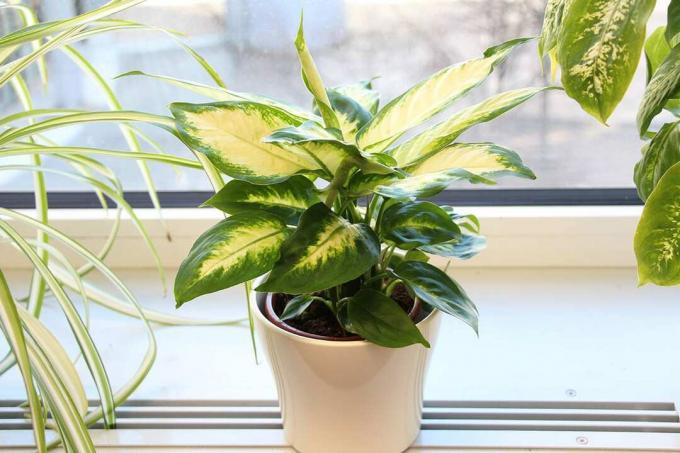
- Toxic: highly toxic in all parts of the plant
- Synonym: Giftaron
- Distribution: South America, Caribbean
- Habit: herbaceous, upright, leaves up to 45 cm in size, evergreen, not hardy
- Height: 50 to 300 cm
- Location: bright, bathrooms or hallways are ideal, no direct sun, 20 ° C to 30 ° C, high humidity
Indoor aralia (Fatsia japonica)
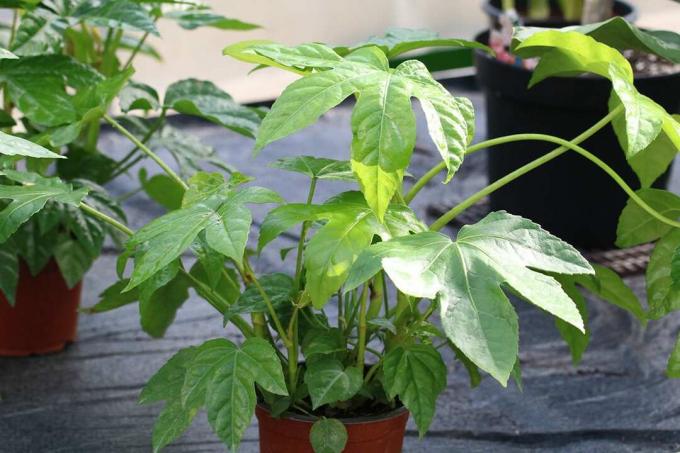
- Toxic: highly toxic houseplants, sap causes skin irritation
- Distribution: Japan, South Korea, overgrown in New Zealand and the Juan Fernández Archipelago
- Habit: bushy, strong, woolly hairs, large leaves with a stem up to 50 cm long, evergreen, sensitive to frost
- Height: 300 to 600 cm
- Flowering period: beginning of September to end of October
- Flower: panicle flowers, five-fold, white
- Location: shady to partially shaded, protect from direct midday sun, protected from drafts, sufficiently humid
Tip: Play it safe by sharing your home only with you non-toxic indoor and balcony plants decorate.
frequently asked Questions
The most common reasons for eaten indoor plants are the cat's natural urge to explore or boredom. There are no other plants available to them inside homes that can be used for these purposes. Plant fibers also help the animals to choke out hairballs.
The possible symptoms of poisoning can be extensive. The most common are gagging, diarrhea, vomiting, gastrointestinal discomfort and irritation of the mucous membranes. More severe poisoning can lead to cramps, intestinal inflammation, uncontrolled salivation, dizziness and tremors. Shortness of breath and comas leading to death are also possible.
If poisoning is suspected, the responsible veterinarian or a veterinary clinic should be contacted or visited immediately. Furthermore, parts of the plant and possible excretions such as vomit should be collected and shown to the vet. As a result, the specialist can be sure which poisonous plant it is.
Avoid houseplants with sharp-edged stalks or leaves, as your house tigers could injure themselves on them. Cuts in the mouth are possible with plants such as Chinese hemp palms (Trachycarpus fortunei) or Cyprus grass (Cyperus alternifolius). This also applies to plants with thorns and thorns, for example roses (pink).
